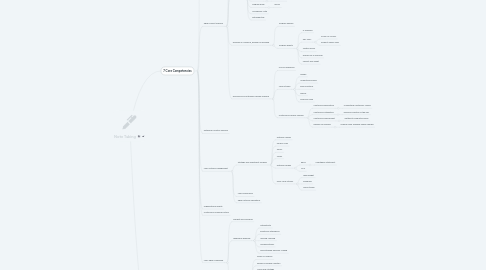
1. 7 Core Competencies
1.1. Team & Technical Agility
1.1.1. Agile Teams
1.1.1.1. Cross-Functional Agile Teams
1.1.1.1.1. Agile Team
1.1.1.1.2. Scrum Master
1.1.1.1.3. Product Owner
1.1.2. Built-In Quality
1.1.2.1. Establish Flow
1.1.2.2. Pairing and Peer Review
1.1.2.3. Collective Ownership and Standards
1.1.2.4. Automation
1.1.2.5. Definition of Done
1.1.3. Teams of Agile Teams
1.1.3.1. Agile Release Train
1.1.3.1.1. Release Train Engineer
1.1.3.1.2. System Architect / Engineering
1.1.3.1.3. Business Owners
1.1.3.1.4. Product Management
1.1.3.1.5. System Team
1.2. Agile Product Delivery
1.2.1. Customer Centricity
1.2.1.1. Design Thinking
1.2.1.1.1. Understand the Problem
1.2.1.1.2. Design the Right Solution
1.2.2. Prioritize Program Backlog
1.2.2.1. Features
1.2.2.1.1. Stories
1.2.3. PI Planning
1.2.3.1. Align to Mission
1.2.3.2. Uncommitted Objectives
1.2.3.3. Capacity and Load
1.2.3.4. Scrum of Scrums (SoS) Sync
1.2.3.5. Plan Review
1.2.3.5.1. Program Board
1.2.3.6. Program Risks
1.2.3.6.1. ROAM
1.2.3.7. Confidence Vote
1.2.3.8. Retrospective
1.2.4. Develop on Cadence, Release on Demand
1.2.4.1. Program Kanban
1.2.4.2. Program Events
1.2.4.2.1. PI Planning
1.2.4.2.2. ART Sync
1.2.4.2.3. System Demo
1.2.4.2.4. Prepare for PI Planning
1.2.4.2.5. Inspect and Adapt
1.2.5. DevOps and Continuous Delivery Pipeline
1.2.5.1. CALMR Approach
1.2.5.2. Value Stream
1.2.5.2.1. Trigger
1.2.5.2.2. Understand Needs
1.2.5.2.3. Build Solutions
1.2.5.2.4. Deploy
1.2.5.2.5. Financial Value
1.2.5.3. Continuous Delivery Pipeline
1.2.5.3.1. Continuous Exploration
1.2.5.3.2. Continuous Integration
1.2.5.3.3. Continuous Deployment
1.2.5.3.4. Release on Demand
1.3. Enterprise Solution Delivery
1.4. Lean Portfolio Management
1.4.1. Strategy and Investment Funding
1.4.1.1. Portfolio Canvas
1.4.1.2. Horizon Map
1.4.1.3. SWOT
1.4.1.4. TOWS
1.4.1.5. Portfolio Kanban
1.4.1.5.1. Epics
1.4.1.5.2. MVP
1.4.1.6. Fund Value Stream
1.4.1.6.1. Lean Budget
1.4.1.6.2. Guardrails
1.4.1.6.3. Value Stream
1.4.2. Lean Governance
1.4.3. Agile Portfolio Operations
1.5. Organizational Agility
1.6. Continuous Learning Culture
1.7. Lean-Agile Leadership
1.7.1. Mindset and Principles
1.7.2. Leading by Example
1.7.2.1. Authenticity
1.7.2.2. Emotional Intelligence
1.7.2.3. Lifelong Learning
1.7.2.4. Growing Others
1.7.2.5. Decentralized Decision-Making
1.7.3. Leading Change
1.7.3.1. Sense of Urgency
1.7.3.2. Powerful Guiding Coalition
1.7.3.3. Vision and Strategy
1.7.3.4. Communication of Vision
1.7.3.5. Empower Employees
1.7.3.6. Short-Term Wins
1.7.3.7. Consolidation of Gains
1.7.3.8. Anchor New Approaches
2. Lean-Agile Mindset
2.1. SAFe Core Values
2.1.1. Alignment
2.1.2. Built-In Quality
2.1.3. Transparency
2.1.4. Program Execution
2.2. SAFe House of Lean
2.2.1. Value
2.2.2. Respect for People and Culture
2.2.3. Flow
2.2.4. Innovation
2.2.5. Relentless Improvement
2.2.6. Leadership
2.3. Agile Manifesto
2.3.1. Individuals and Interactions over Processes and Tools
2.3.2. Working Software over Comprehensive Documentation
2.3.3. Customer Collaboration over Contract Negotiation
2.3.4. Responding to Change over Following a Plan

